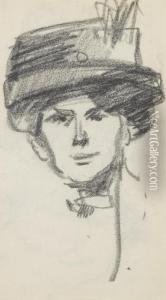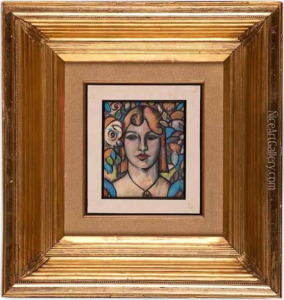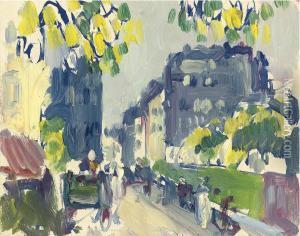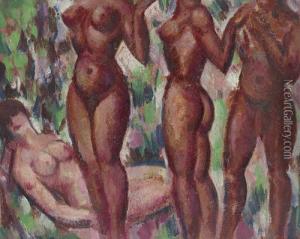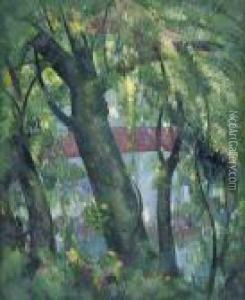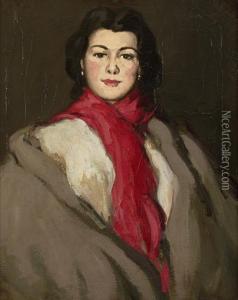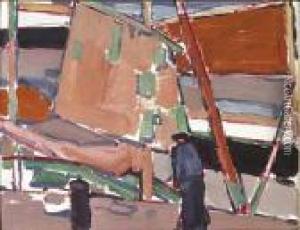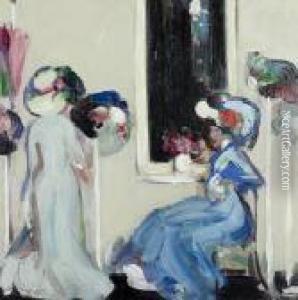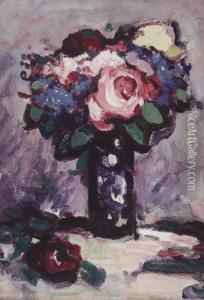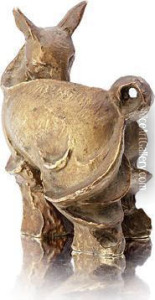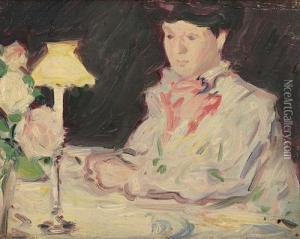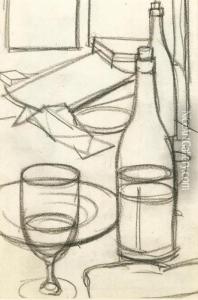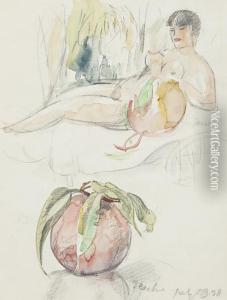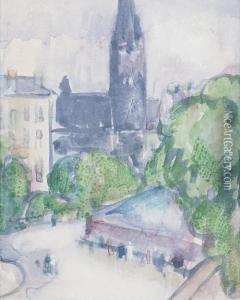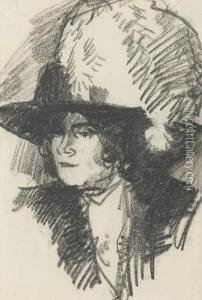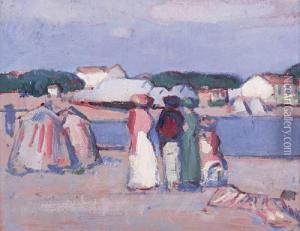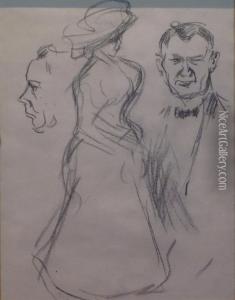John Duncan Fergusson Paintings
John Duncan Fergusson was a leading figure in the Scottish Colourists movement, a group of painters influenced by the vivid hues of French Impressionism and Fauvism. Born on March 9, 1874, in Leith, Edinburgh, Fergusson was largely self-taught, developing his skills through extensive travels and exposure to contemporary art movements in Europe, particularly in France, where he spent a significant portion of his career.
Fergusson moved to Paris in the early 1900s, where he became deeply involved in the city's avant-garde art scene. During this period, he was influenced by the works of the Impressionists and Fauves, adopting their bold use of color and light. Despite his alignment with these movements, Fergusson maintained a distinctive style, characterized by a robust and sensuous approach to form. His subjects varied from landscapes and still lifes to figures, including a significant number of portraits and nudes, often featuring his lifelong partner, the dancer Margaret Morris.
The outbreak of World War I forced Fergusson to return to Britain, where he continued to develop his art and became a central figure in the Scottish art scene. After the war, he and Morris settled in Glasgow, and in 1929, they founded the New Art Club, a pivotal group that aimed to promote modern art in Scotland. Fergusson's work during this period reflects a matured approach to color and composition, maintaining vibrancy while exploring more complex, often rhythmic arrangements inspired by Morris's dance movements.
Throughout his career, Fergusson was committed to the idea of art as a vital, enriching component of society. He was instrumental in establishing the Scottish Gallery of Modern Art in Edinburgh and remained an active advocate for modern art until his death on January 30, 1961. Fergusson's legacy is marked by his contribution to the Scottish Colourists movement and his role in the development of modern art in Britain. His work is celebrated for its contribution to the early 20th-century European art scene, highlighting the cross-cultural exchange between Scotland and France and the enduring impact of Impressionism and Fauvism on British art.
